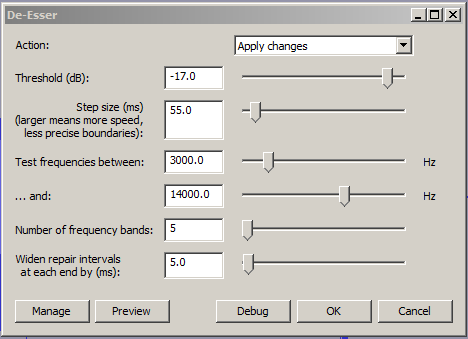That sounds too sibilant to me.
The pattern of sibilance is now too complicated to be corrected by Steve’s de-esser, which just has 1 band.
Paul-L’s De-Esser can have dozens of bands, 5 will do …

Paul-L’s De-Esser should only be used on mono, as it will add weird effect on stereo/pseudostereo.
Rather than use two de-essers in your chain, just use precision one : Paul-L’s.
(a) change tempo,
(b) change pitch,
(c) RMS normalize to -22 dB
(d) (soft) Limit -6dB
(e) de-ess using Paul-L’s
(f) rattle remove EQ
===================== below are deluxe options
(g) Ozone (pseudo-stereo)
(h) EQ boost (presence)